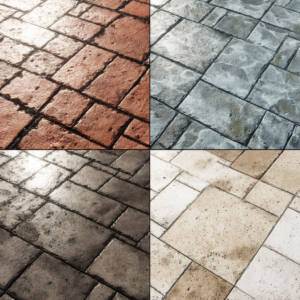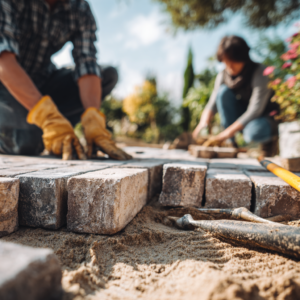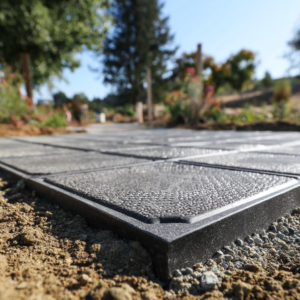A paver patio adds elegance and functionality to any outdoor space, but over time, dirt, moss, and stains can dull its beauty. Can you pressure wash a paver patio when that happens? Well, as many homeowners know by experience, the answer is yes – albeit with critical caveats.
While pressure washing can restore pavers to their original glory, improper techniques risk permanent damage. This article explores the science, best practices, and hidden pitfalls of pressure washing pavers, offering actionable insights to ensure your patio remains a lasting investment.
And read as well: How to get rid of old pavers – a complete guide
Jump to:
Can You Pressure Wash a Paver Patio? The Science Behind It
Pavers are durable, but not indestructible. Made from materials like concrete, clay, or natural stone, their porous surfaces and joint sand are vulnerable to high-pressure water jets. The key lies in balancing cleaning efficacy with preservation.

Everything starts with paying attention to PSI Recommendations. Experts universally recommend using a pressure washer with 1,000–1,500 PSI for paver cleaning. Higher pressures can erode the surface, strip joint sand, or even dislodge pavers.
For context, industrial-grade machines often exceed 3,000 PSI, which is far too harsh for residential projects. If your washer lacks adjustable settings, maintain a 24-inch distance from the surface and use a wide-angle nozzle (25°–40°) to disperse pressure.
Joint sand is another aspect that you need to pay attention to, since it stabilizes pavers, preventing shifting and weed growth. High-pressure streams can wash this sand away, destabilizing the entire structure.
After cleaning, re-sanding is essential to restore integrity. Professionals typically combine pressure washing with re-sanding and resealing.
Step-by-Step: Safely Pressure Washing Your Paver Patio
Pressure washing a paver patio requires precision, patience, and an understanding of the materials involved. While the process can revitalize weathered surfaces, one misstep could lead to irreversible damage.
Preparing the Patio for Pressure Washing
Before turning on the pressure washer, thorough preparation ensures the cleaning process is efficient and safe.
Start by removing loose debris such as leaves, dirt, or twigs using a stiff-bristle broom or leaf blower. This step prevents debris from becoming projectiles under high-pressure water or grinding into the pavers during cleaning.
Next, inspect the patio for stains. Oil spills, mildew, or rust may require pre-treatment. Apply a biodegradable, pH-neutral cleaner to these areas, allowing it to sit for 10–15 minutes. Avoid acidic solutions like vinegar or bleach, which can corrode concrete pavers or alter the color of natural stone.
For stubborn organic growth (e.g., algae or moss), consider a specialized paver-safe antimicrobial spray.
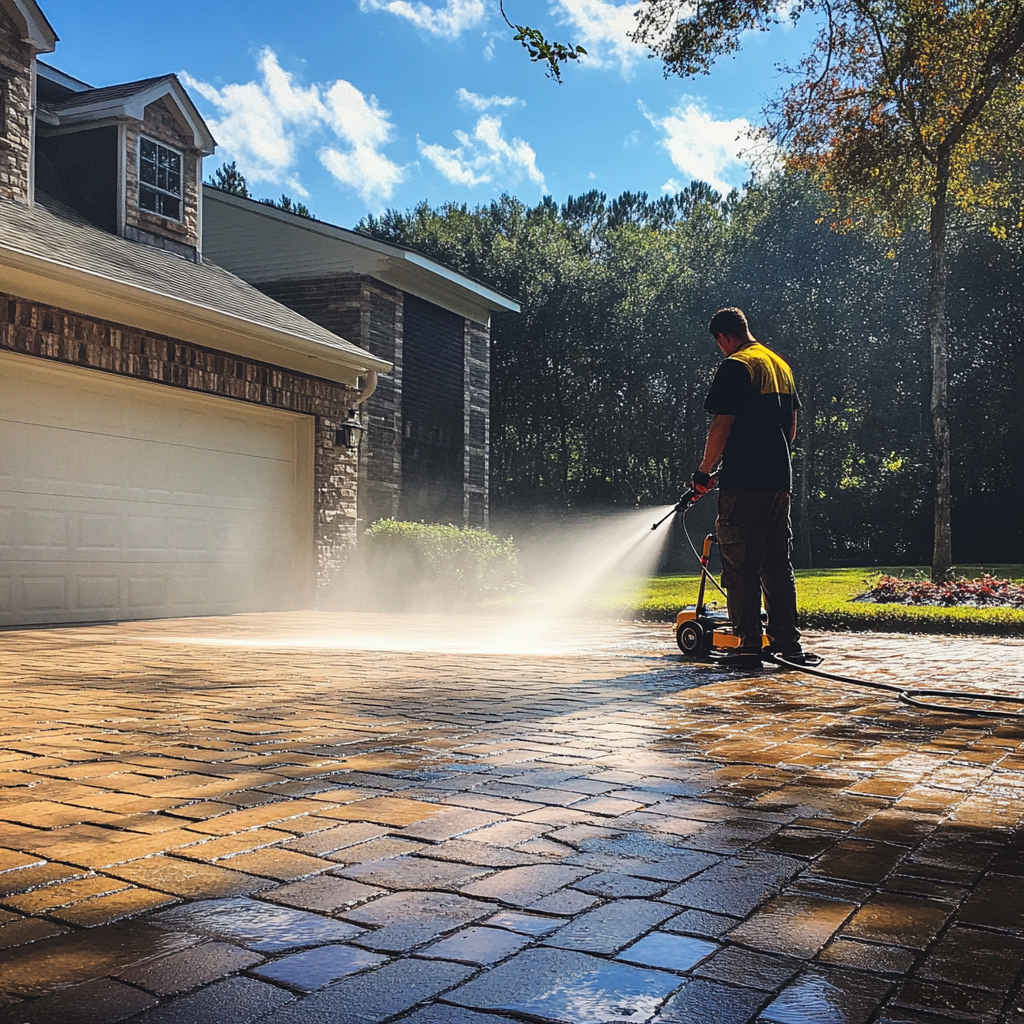
Finally, protect surrounding plants and landscaping. Cover nearby shrubs with plastic sheeting and rinse vegetation with water before and after pressure washing to dilute any chemical runoff.
Testing Pressure Settings on a Small Section
Even with research, every paver patio is unique. Variations in material age, porosity, and joint sand quality mean pressure settings that work for one patio may harm another. Select an inconspicuous area, such as a corner or a spot beneath furniture, to conduct a test.
Set the pressure washer to 1,000–1,200 PSI and use a 25°–40° wide-angle nozzle. Hold the wand 24 inches from the surface and clean a 2×2-foot section. Examine the pavers for signs of surface erosion, joint sand displacement, or discoloration.
If the test area shows damage, reduce the PSI or increase the distance between the nozzle and pavers. Adjust until the cleaning effect is strong enough to remove grime without compromising integrity.
Using a Surface Cleaner Attachment for Even Results
A surface cleaner attachment is a game-changer for pressure washing pavers. Unlike standard nozzles, which concentrate water into a narrow jet, surface cleaners feature rotating nozzles under a protective housing. This design disperses pressure evenly across a wider area, preventing “zebra stripes” or uneven cleaning patterns.
When using a surface cleaner, move the tool in slow, overlapping passes, similar to mowing a lawn. Keep the wand at a consistent height, typically 1–2 inches above the pavers. For larger patios, divide the space into manageable sections (e.g., 10×10-foot areas) to maintain focus and ensure full coverage.
Note that surface cleaners work best on flat, even surfaces. If your patio has textured or uneven pavers, opt for a standard wand and exercise extra caution around raised edges.

Maintaining Consistency in Technique and Pace
Inconsistent pressure washing techniques lead to patchy results and accidental damage. Start by establishing a steady rhythm: Move the wand at a pace of about 1 foot per second, overlapping each pass by 50%. Avoid lingering in one spot, as even brief pauses can carve into the paver surface or joint sand.
Pay special attention to the edges of the patio, where pavers are often less stable. Angle the wand slightly outward to avoid blasting sand from the joints. For tight corners, switch to a lower PSI setting or use a garden hose with a high-pressure nozzle attachment.
If fatigue sets in, pause frequently. Rushing the job increases the likelihood of errors, such as accidentally directing water under pavers and destabilizing the base layer.
Restoring the Patio After Pressure Washing
Post-cleaning care is just as critical as the washing itself.
Begin by rinsing the entire patio with a garden hose to remove residual cleaner and dislodged debris. Inspect the joints between pavers – if sand has been washed away (a common issue), replenish it immediately.
Use polymeric sand, which hardens when wet, creating a durable barrier against weeds and insects. More on polymeric sand in this guide.
Allow the patio to dry completely for 24–48 hours before applying a sealant. Sealants protect against future stains, UV damage, and erosion, but applying them to damp pavers traps moisture and leads to hazing.
Each sealer can have its own application method, which typically comes explained on the product itself. While this application is fairly simple and straightforward, this guide can help with the intricacies of it.
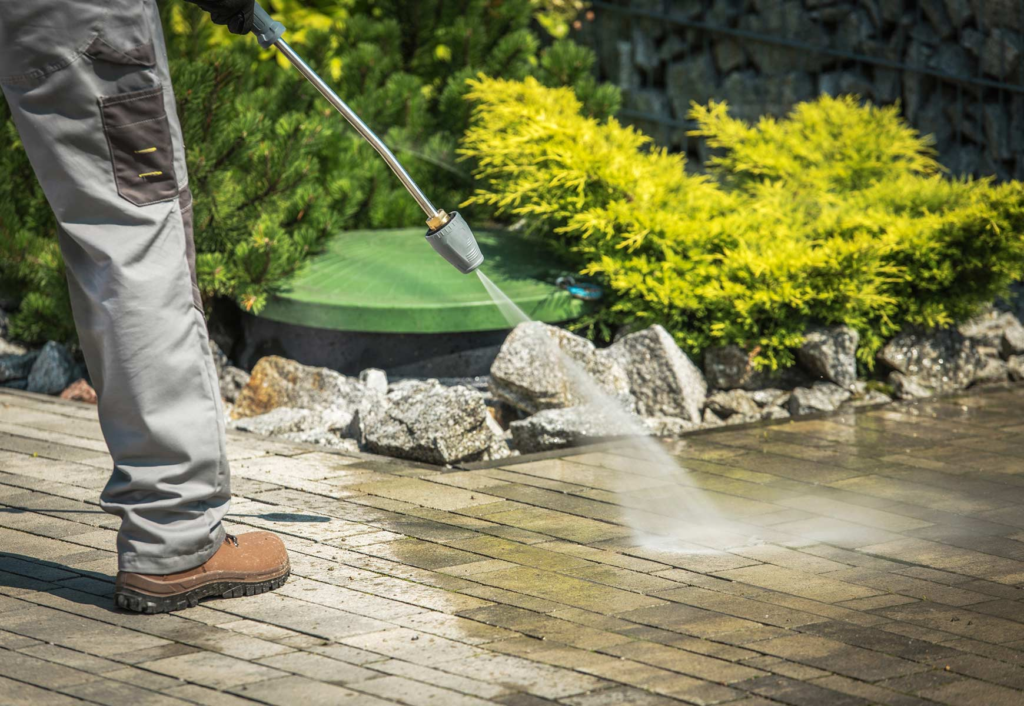
But for homeowners unsure about resealing techniques, hiring professional services is a way to make sure you end with the best possible outcome, so it is always something worth considering.
Long-Term Maintenance: Beyond Pressure Washing
Preserving the beauty and functionality of a paver patio extends far beyond occasional pressure washing. Homeowners who adopt proactive, routine care minimize wear, prevent costly repairs, and ensure their outdoor space remains a lasting investment.
The regular sweeping is your first line of defense. Debris like leaves, dirt, and pollen isn’t just unsightly, it’s destructive. Over time, organic matter traps moisture, encouraging weed growth and mold, while abrasive particles grind into paver surfaces underfoot, causing premature erosion.
Sweeping the patio weekly with a stiff-bristle broom or leaf blower removes these threats before they escalate. Focus on the joints between pavers, where sand displacement can destabilize the entire structure.
For shaded areas prone to moss, a monthly rinse with a garden hose disrupts spore development without the need for harsh chemicals.
Once again, the importance of sealing cannot be overstated. A high-quality sealant acts as an invisible shield, repelling stains, UV rays, and water damage. Most experts recommend reapplying sealant every 1–2 years, depending on climate and foot traffic.
Opt for breathable, water-based formulas that allow moisture to escape while blocking oil, grease, and dirt. Before application, ensure the patio is clean, dry, and free of cracks.
Quick action is critical when spills occur. Blot (not scrub) oil, wine, or grease spills as soon as they happen with a clean cloth to avoid spreading. For organic stains (e.g., bird droppings or algae), apply an enzymatic cleaner to break down residues without harming surrounding plants or sand joints.
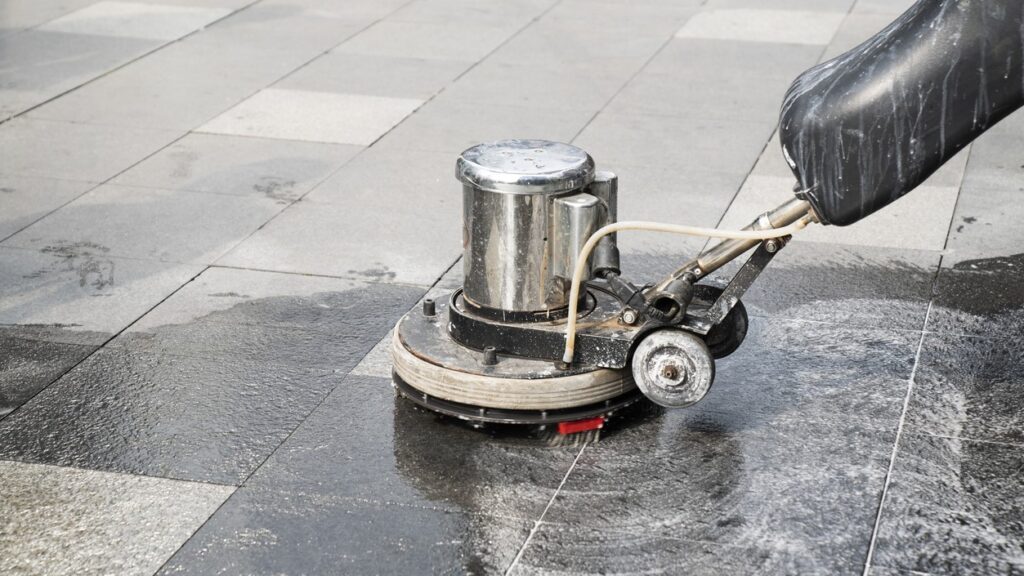
Avoid acidic solutions, which can etch concrete pavers or bleach natural stone. For stubborn marks, a paste of baking soda and water left overnight often lifts discoloration. Addressing stains promptly reduces the need for aggressive cleaning later, preserving the patio’s appearance and structural integrity.
So – can you pressure wash a paver patio?
Yes, pressure washing a paver patio is feasible, but it demands precision. By adhering to PSI guidelines, using the right tools, and prioritizing post-cleaning care, homeowners can rejuvenate their outdoor spaces safely. However, the margin for error is slim.
For those uncertain about DIY methods or simply valuing time over trial and error, as we mentioned, working with hardscape professionals is the best choice. So, look for professionals you can trust in your area!
And if you happen to be around Sarasota County, in Florida, we here at JS Brick are your best option. We offer expert paver cleaning services. With over 20 years of experience, our team combines cutting-edge techniques with a deep understanding of materials, ensuring your patio remains a centerpiece of your home.
Ready to restore your pavers? Get in contact today for a free estimate on our services.

